Subscribe to Baseball History Comes Alive! for automatic updates (sign-up block found in right side-bar)
As a Free Bonus for subscribing, you’ll get instant access to my two Special Reports: Memorable World Series Moments and Gary’s Handy Dandy World Series Reference Guide!
“Early Japanese Baseball” Photo Gallery
Click on any image below to see photos in full size and to start Photo Gallery:
Today we offer our readers something a bit different. We’re very happy to feature a guest post from SABR member Rob Fitts. Rob is a recognized authority on Japanese baseball. An acclaimed author, he has written five books on the subject. I think you’ll find his account of solving the mystery of Togo Hamamoto interesting. It goes well with our theme of baseball history as it has a connection to the Deadball Era and John McGraw’s 1911 New York Giants at Spring training in Marlin, Texas. -GL
Solving the Mystery of Togo Hamamoto
The history of early Japanese American baseball is still being discovered. There is so much we do not know. Mainstream, English-language newspapers rarely covered Japanese American daily life or sport. When these newspapers did mention Japanese immigrant baseball, the articles were often garbled—full of misspellings, factual errors, and sometimes overt bigotry. On top of this, early twentieth century sportswriters enjoyed telling an entertaining story more than report fact. Piecing together history from these articles is challenging as most of the reports cannot be taken at face value but instead need to be confirmed by independent sources. As an example, let’s examine the story of Togo Hamamoto.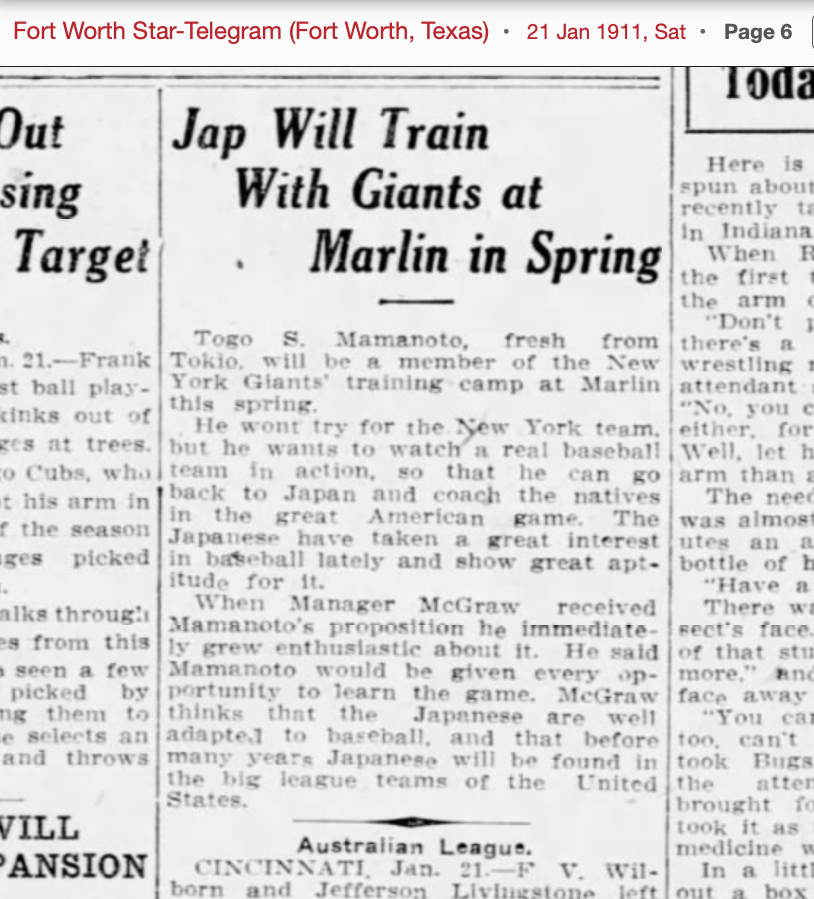
In mid-January 1911, an intriguing article ran on the sports pages across the United States. On January 17th, New York Giants manager John McGraw announced that Togo S. Hamamoto of Tokyo would be joining the team at Marlin Springs, Texas, to observe American “scientific baseball.” A press release noted that Hamamoto, “who has the backing of a number of influential citizens of Tokyo, . . . will devote his time to mastering the game.”[1] “His backers plan to add professional baseball in their own country.”[2] “McGraw plans to do all in his power to spread the gospel of the game in foreign lands,” the release continued. He “is prophesying that some day [sic] a real world’s championship will be played with the United States and Japan as rivals.”[3] Newspapers across the country, from large-market dailies to bi-weekly rags in rural villages, reprinted the announcement.
About a month later, Hamamoto was in the news again. This time, reporters had transformed him from an observer into a player receiving a tryout. “Togo is a star player among the Japs, and will work out daily,” reported the Chronicle-Telegram of Elyria, Ohio. “He may play on the second team.”[iv] But of more interest to the writers were reports of Hamamoto bringing his valet and personal cook to training camp.
He “may do more than merely learn baseball. He threatens to change the entire social conditions of ball players,” joked an anonymous writer. “When the valet is seen trailing Togo’s baseball shoes after a workout with the Giants or perhaps pressing his suit and folding it neatly away in the locker to await the next practice, it is likely to strike the ball players’ fancy and before the Giants come north it is more than probable that Togo S. will lose the distinction of being the only ball player who has his own private valet.”[v] Another writer worried, “McGraw fears a valet oiling Togo’s shoes and fanning him between innings, may cause the Giants to insurge [sic] and ask for the same treatment.”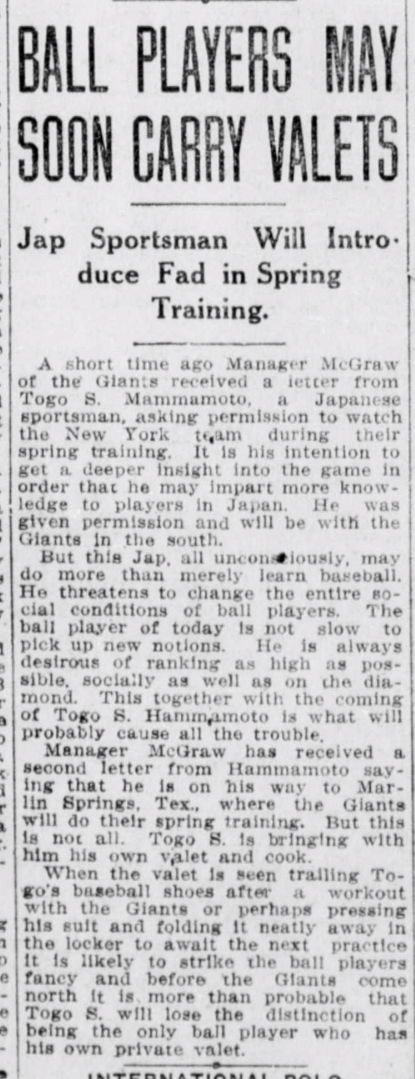
On March 9, the sports editor of the New York Times asked, “Where is Togo Hamamoto, the Japanese athlete, who was going to train with the New York Giants at Marlin Springs? Togo burned up the cables getting permission from Manager McGraw to get inside information on training a baseball team, and McGraw gave him permission to join the camp. But he hasn’t appeared, and nothing has been heard from him.”[vii] The Giants began practicing in Marlin’s Emerson Park on February 20 and stayed until March, practicing in Emerson Park. Reports from the Giants’ spring training camp fail to mention Hamamoto and newspaper articles do not provide a reason for his absence.
When I wrote the first draft of Issei Baseball in 2018, I wondered if the story was a hoax dreamed up by a bored sportswriter yearning for the start of the baseball season. My searches of immigration records found no man named Hamamoto arriving from Japan in 1911, plus his name does not appear in Japanese baseball histories. On top of that, his name is suspiciously similar to Irving Wallace’s fictional character Togo Hashimura, the Japanese “school boy” whose book of fictitious letters describing life in America had become a best seller in 1909. I concluded that the articles written about Hamamoto attending spring training were a hoax written for amusement.
That changed in early 2019 when I received a copy of Tetsusaburo “Tom” Uyeda’s previously classified FBI file. Uyeda, who had played on Guy Green’s 1906 Japanese Base Ball Team and the 1908 Denver Mikado’s Japanese Base Ball Team, was unjustly convicted in 1942 by the U.S. Alien Enemy Hearing Board as a Japanese spy. During his appeal, Uyeda explained; “In the Spring of 1912, I received a letter from one Mr. Hamamoto who asked me to come over to St. Louis, Missouri, to assist in organizing a baseball team.”[viii]
Refocusing my research on St. Louis, I found a Togo S. Hamamoto listed in the city directory as valet working for Hugh Kochler, a wealthy brewer. Born Shizunobu Hamamoto in Nagasaki on December 25, 1884, he arrived in Seattle on the SS Shimano Maru on April 22, 1903. He made his way to St. Louis in 1906 and began working as a valet while reporting on Major League baseball for the Nagasaki-based newspaperSasebo. He attended four or five games per week and became friendly with a number of the players, including Cristy Mathewson, Lou Gehrig, and Babe Ruth.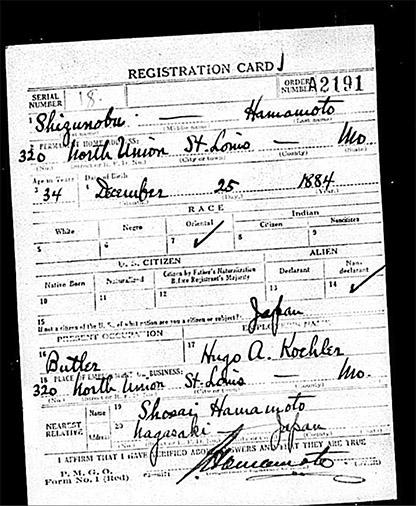
But did Hamamoto attend the Giants’ spring training in 1911? There was no evidence that he had until June 2020 when Robert Klevens, owner of Prestige Collectibles and an authority of Japanese baseball memorabilia, found this postcard.
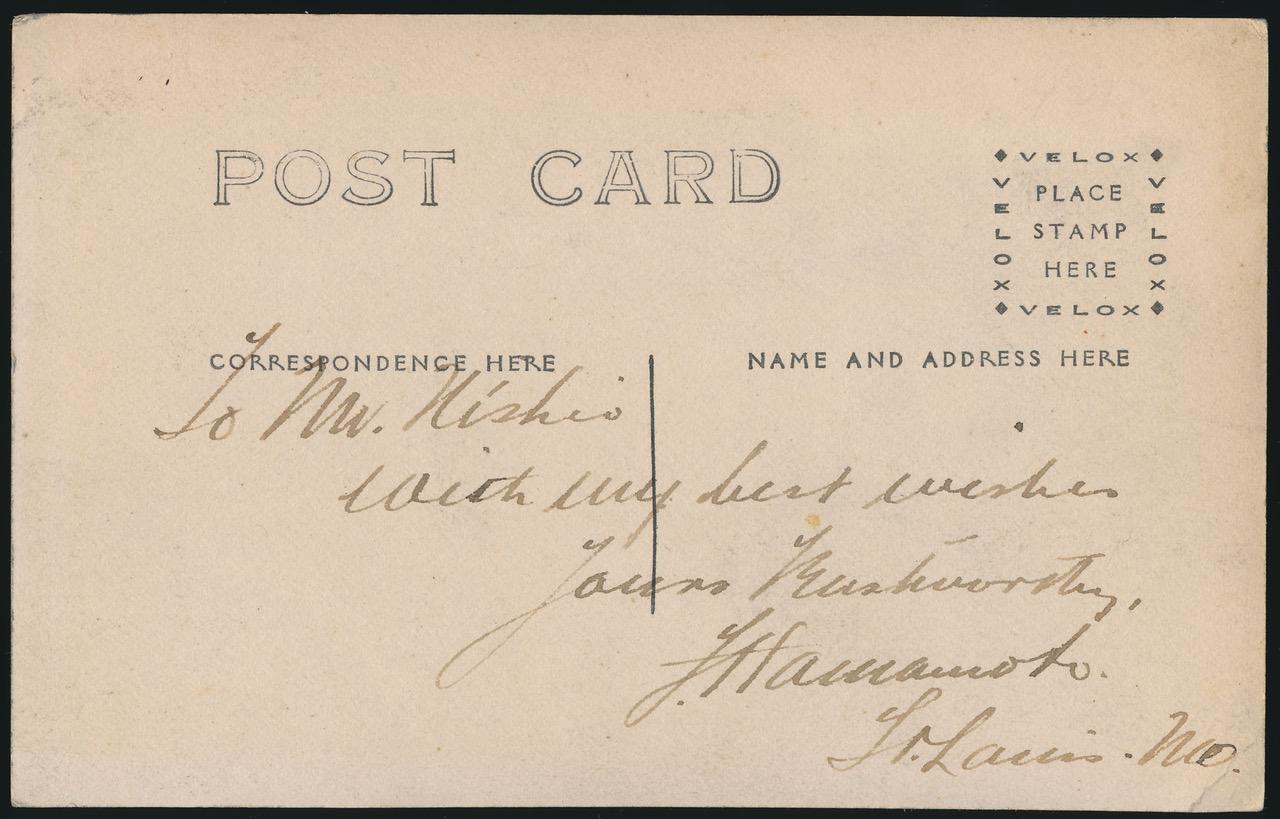
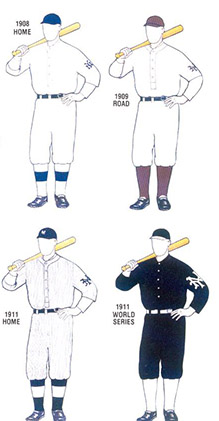 (Illustration from Baseball Uniforms of the 20th Century by Marc Okkonen)
(Illustration from Baseball Uniforms of the 20th Century by Marc Okkonen)
As new uniforms were expensive and teams did not have large budgets, it was common for players to practice in uniforms from previous seasons. This picture from spring training in 1912, for example, shows Giants players in various uniform styles.
I have not been able to locate enough pictures of Emerson Park to confirm if the photograph of Hamamoto was taken there, but the wooden fence in the photograph is similar to the fence surround the ballpark. Efforts to identify the Mr. S noted on the back has been fruitless.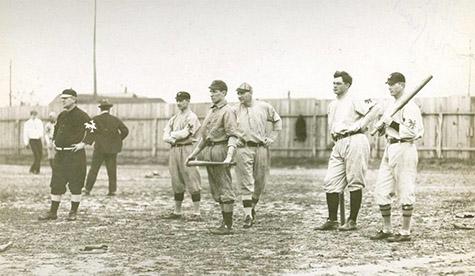
So even though the postcard does not prove that Hamamoto attended the Giants spring training in 1911, it is likely that the newspaper stories were partly accurate and that he eventually arrived. Hamamoto’s time with the Giants, however, did not lead to a professional baseball league in Japan. Unsuccessful attempts to create a pro circuit did not begin until 1920s and it was not until the creation of Japanese Baseball League in 1936 that Japan would have a stable professional league.
Hamamoto would eventually turn his back on baseball. A few years later, he was in the stands watching his home-town Browns battle Walter Johnson and the Washington Senators when a St. Louis batter popped out in a key situation. “Some of the people behind me, and one of them was a lady, used such language—oh, it was so bad that I decided baseball did not always contain the three cardinal principals which I think a sport should have—Dignity, Honesty, and Humor. Since then I have not gone to ball games.”[x]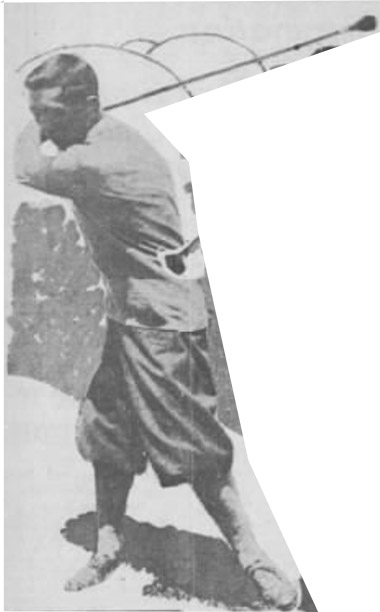
Around 1916, while still working as a valet for Kochler, Hamamoto took up golf. He played at every opportunity and soon mastered the sport. In 1929, he won St. Louis’s Forrest Park Golf Club’s championship and went on to play in several national amateur championships. Upon his father’s death in 1933, he returned to Nagasaki to inherit the estate. At the end of World War II, he became an interpreter for the police in Haiki, Japan.[xi] The year of his death is unknown.
You can read more about the history and pioneers of early Japanese American baseball in Issei Baseball: The Story of the First Japanese American Ballplayers, available at Amazon and all major on-line bookstores.
Visit Rob Fitts Baseball History Web site
Rob Fitts
[1] Salt Lake Telegram, January 17, 1911, 7. [2] Akron Beacon Journal, January 18, 1911, 8. [3] Salt Lake Telegram, January 17, 1911, 7. [iv] Chronicle-Telegram, February 23, 1911, 3. [v] Winnipeg Tribune, February 24, 1911, 7. [vi] Elyria Chronicle-Telegram, February 23, 1911, 3. [vii] New York Times, March 9, 1911, 12. [viii] Tetsusaburo Uyeda to Edward J. Ennis, January 3, 1944. World War II Alien Enemy Detention and Internment Case Files, Tetsusaburo “Thomas” Uyeda, Case 146-13-2-42-36. [ix] St. Louis Post-Dispatch, August 1, 1929, 19. [x] St. Louis Post-Dispatch, August 1, 1929, 19. [xi] St. Louis Star and Times, December 4, 1945, 22.
About Rob Fitts:
A former archaeologist with a Ph.d. from Brown University, Rob Fitts left academics behind to follow his passion – Japanese Baseball. An award-winning author and speaker, his articles have appeared in numerous magazines and websites, including Nine, the Baseball Research Journal, the National Pastime, Sports Collectors Digest, and on MLB.com.
He is the author of five books on Japanese baseball. His next book, Issei Baseball: The Story of the First Japanese American Ballplayers will be published by the University of Nebraska in 2020.
Earlier books include Mashi: The Unfulfilled Baseball Dreams of Masanori Murakami, the First Japanese Major Leaguer (University of Nebraska Press, 2015); Banzai Babe Ruth (University of Nebraska Press, 2012); Wally Yonamine: The Man Who Changed Japanese Baseball (University of Nebraska Press, 2008); and Remembering Japanese Baseball: An Oral History of the Game (Southern Illinois University Press, 2005).
Fitts is the founder of SABR’s Asian Baseball Committee and recipient of the society’s 2013 Seymour Medal for Best Baseball Book of 2012; the 2019 McFarland-SABR Baseball Research Award; the 2012 Doug Pappas Award for best oral research presentation at the Annual Convention; and the 2006 Sporting News- SABR Research Award. He has also been a finalist for the Casey Award and a silver medalist at the Independent Publish Book Awards.
While living in Tokyo in 1993-94, Fitts began collecting Japanese Baseball cards. He is now recognized as one of the leading experts in the field and has created the business, Robs Japanese Cards LLC. He regularly writes and speaks about the history of Japanese baseball cards.
Photo Credits: From the collection of Rob Fitts
We are a participant in the Amazon Services LLC Associates Program, an affiliate advertising program designed to provide a means for us to earn fees by linking to Amazon.com and affiliated sites. Click here to view Amazon’s privacy policy
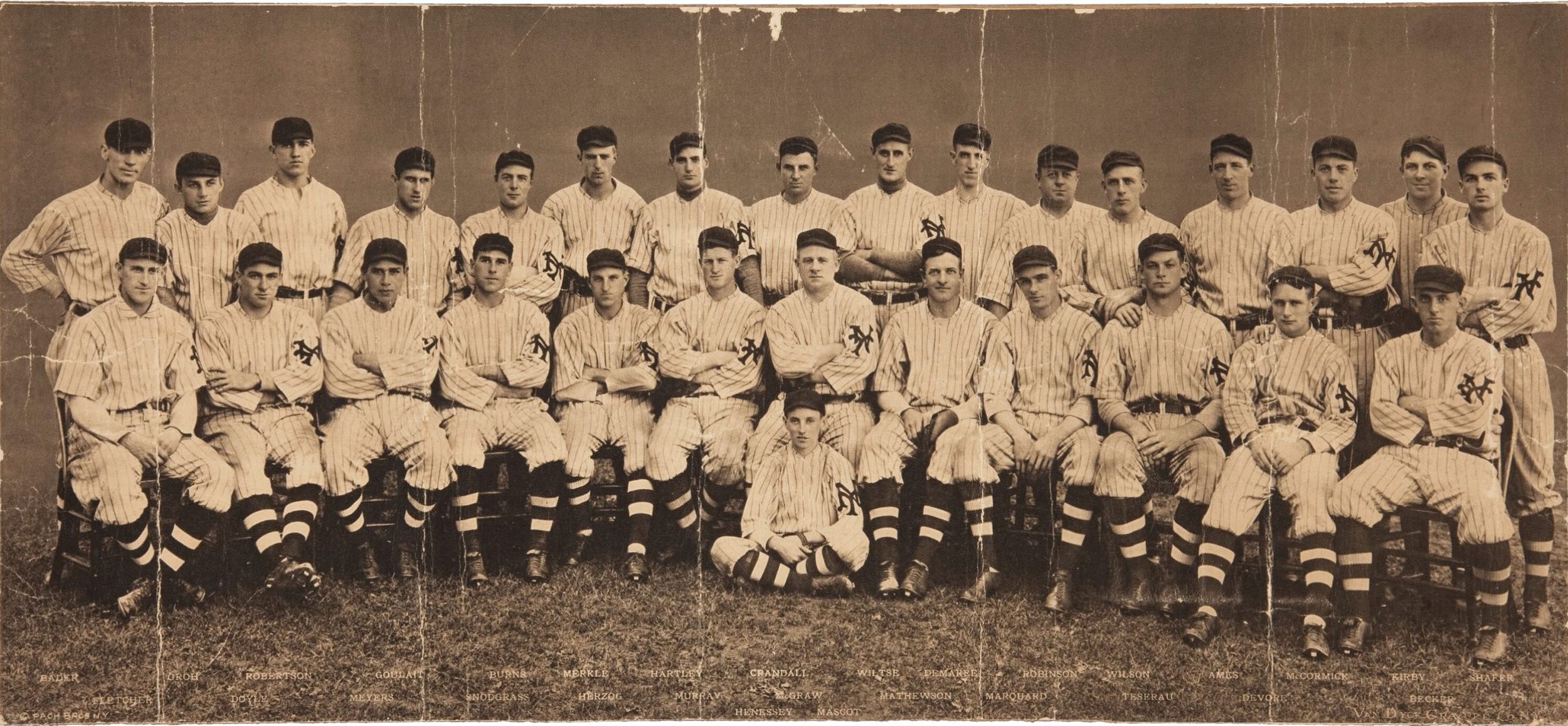
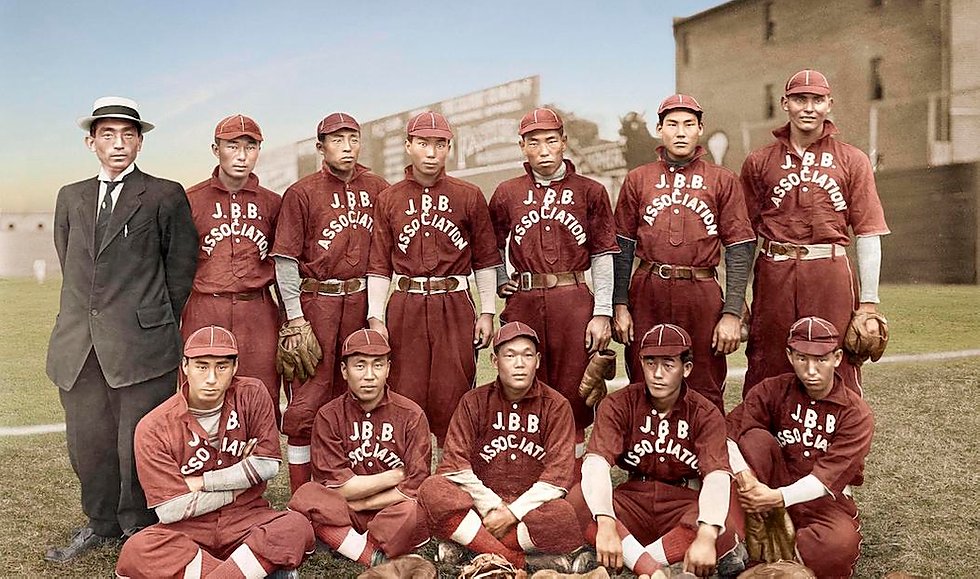
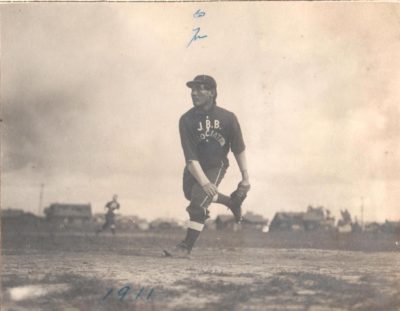
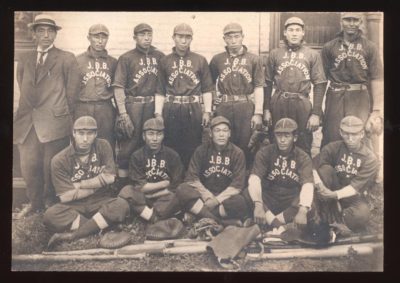
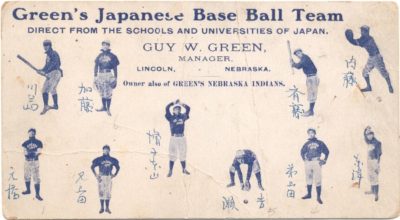
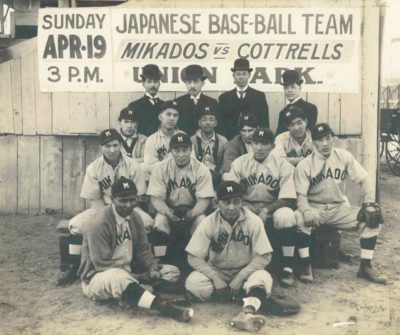
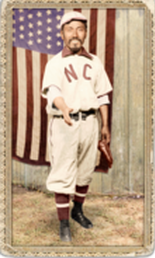
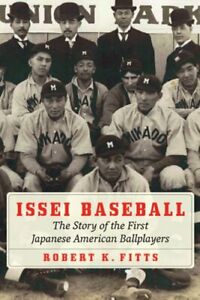
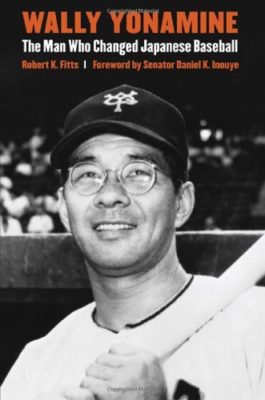
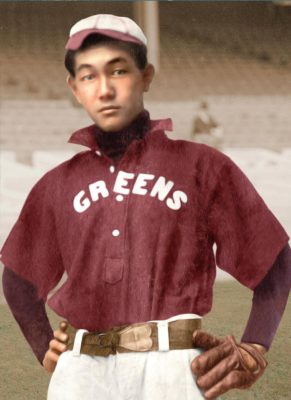
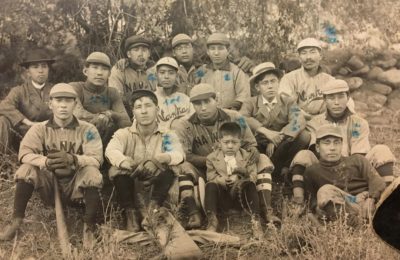

Wow that’s a story I have never heard about… interesting that a postcard photo even existed.